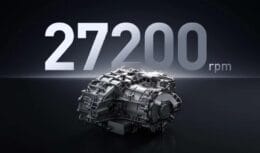
The new graphene, created at Chalmers University, was named Janus graphene and could change the electric car industry
Graphene is a fundamental part of new technologies, being used as the anode of lithium-ion batteries. These are the batteries for electric cars, the most desired for their high charge capacity. There is a central problem with this technology at the moment: Lithium is a rare, expensive metal, and it has generated a series of political difficulties. The price of lithium pushes up the average price of electric vehicles, which has been weakening initiatives for mass production of electric cars.
Fortunately, research from the University of Chalmers, in association with research centers in Europe, is going to change that by allowing cheaper high-capacity batteries. As announced, they have developed a modification in the organization of graphene, which makes sodium able to function as information as efficiently as lithium.
If this possibility is confirmed, this new graphene will change the market for batteries and electric cars forever.
- Magna's "EtelligentReach" smart engine doubles the range of electric cars without the need for powerful batteries
- New technology will put an end to electric car battery fires
- China, Russia and US companies battle for lithium in one of the world's largest reserves of the mineral, crucial for electric car batteries
- Owner explodes with 30 kg of dynamite Tesla electric car after encountering the fortune charged for repair
What makes this new component special?
The new form of graphene, which has been named Janus graphene (a two-faced Roman god associated with doors and new beginnings), solves a problem with one of the cheapest batteries to produce: sodium-ion batteries.
Current battery technology involves intercalating lithium ions with a layer of graphene, which allows lithium ions to be stored in such a way that they can be converted into energy at the right time.
It turns out that sodium ions, being larger, cannot flow with the same ease through traditional graphene anodes, which caused loss of energy storage capacity in sodium batteries.
What the researchers at Chalmers University did was to create a spacer of molecules in graphene, allowing that, with more space, sodium ions could behave similarly to lithium ions.
To get an idea of the difference that this new graphene offers to the current battery, using normal graphene it is possible to maintain a total of 35 milliamps/hour/gram (mA/h/g-1), which is ten times less efficient than lithium batteries.
With the new graphene, the capacity increases to 332 milliamps/hour/gram (mA/h/g-1), which is already considerably closer to lithium batteries.
Graphene Janus and its possible impact of electric cars
The great differential of this new component is its ability to completely change the electric car market.
One of the main impediments to greater acceptance of electric cars in all markets around the world has been the price issue, and one of the most expensive components of an electric car at the moment is its batteries, whose price is inflated by the need to use lithium for high-capacity batteries.
In conclusion, with cheaper batteries, electric cars are cheaper, being able to supplant internal combustion vehicles in terms of cost-effectiveness, allowing this transition to occur more quickly.
In addition, with cheaper high-capacity batteries, it will be possible to sell electrification kits for vehicles, making current cars at least hybrid, and allowing electric cars to become a much more common reality.
This, however, is still far from being realized. As this study was only published recently, there is still a long way to go for Janus graphene to leave the labs and start circulating on the streets.
Will this be the technology that will dominate the battery market? New possibilities for electric cars are being discovered every day, and you hear about them all here at CPG.








